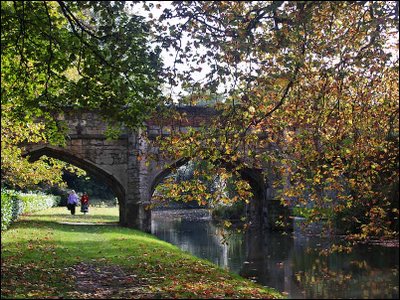In the 1400s Henry IV built sets of rooms for himself and his queen on the west side of the building and also the North Stone Bridge across the moat. In the 1470s Edward IV added the Great Hall as a place for the royal court to dine, and the future Henry VIII spent much of his childhood at the palace. When he became king Henry further extended and improved Eltham, as did Elizabeth I who mainly used it for guests visiting the court. However, by 1609 it was reported to be in bad repair. Charles I was the last monarch to stay at Eltham, and in 1648, in the Civil War, Parliamentary troops stationed there did much damage. The remains were sold to Colonel Nathaniel Rich who demolished many of the buildings. By the 1700s the Great Hall was being used as a barn, and what was left of the palace as farm buildings: a sad come down for what had been one of the foremost residences in the England.
A public campaign in 1828 stopped further demolition at Eltham, and in 1894 and 1911 the Great Hall's walls, hammerbeam roof and tracery were made good. The final saving of Eltham came about, controversially, in 1933 when private owners leased the building from the Crown and built a large modern house adjoining the Great Hall, and incorporating it. The new building's exterior was in a restrained classical style, but the interior was aggressively modern Art Deco. Incendiary bombs caused some damage in 1940, and the Army became the tenants until 1992. However, in 1984 English Heritage took over management of the site, and it remains in their care today. A visit to see the juxtaposition of the medieval and the twentieth century, and particularly the wonderfully restored 1930s rooms, is well worthwhile.
My photographs are two views of Eltham on a sunny October day. The first shows a dry section of the moat with the house (completed in 1936) beyond. The second shows the North Stone Bridge dating from the 1400s. I waited for people to be framed by the bridge arch in the second shot - the composition seemed to need a better focus. However, the first photograph, with the wooden bridge leading the eye to the house spoke for itself. Post processing involved bringing a little more detail out of the shadows.
photographs & text (c) T. Boughen

